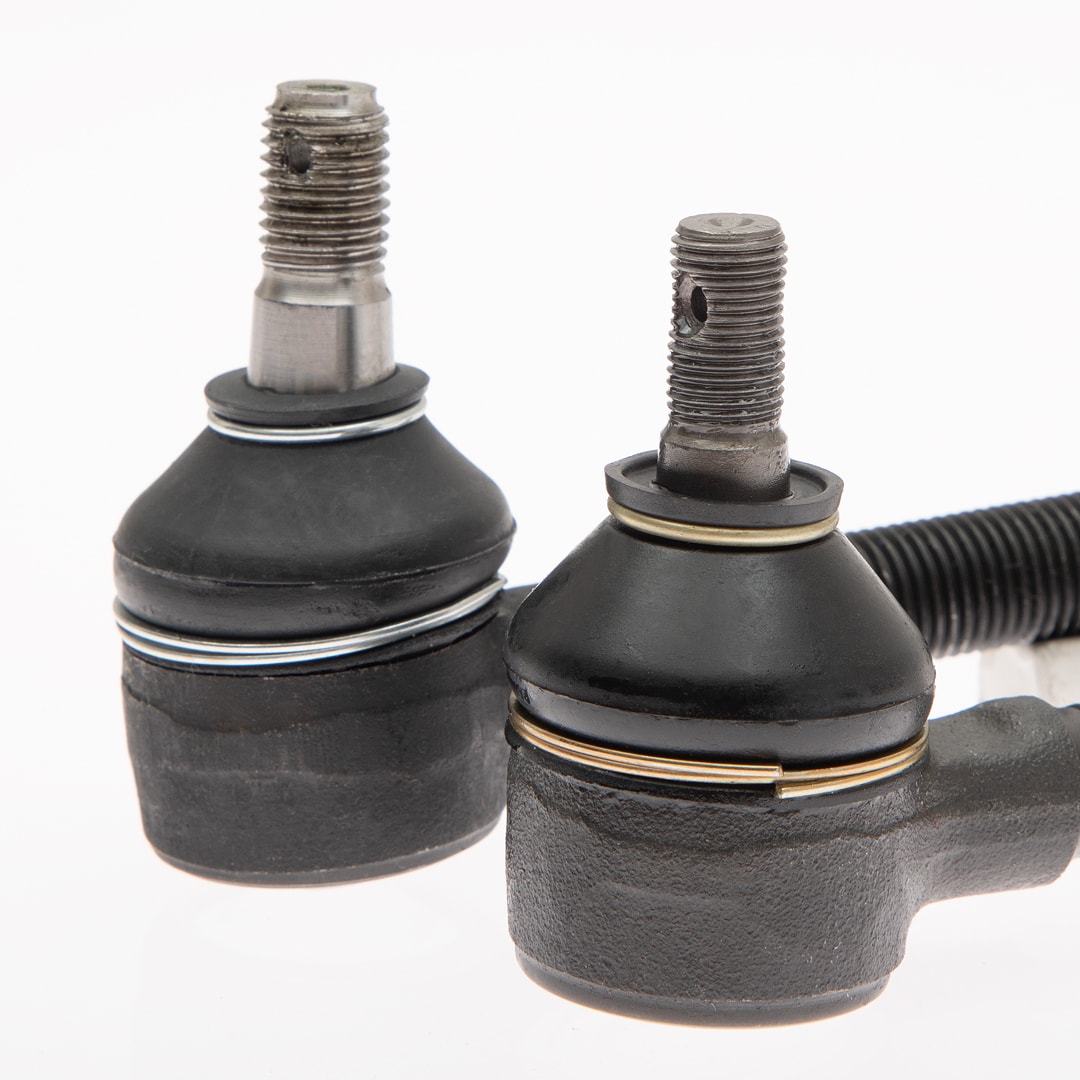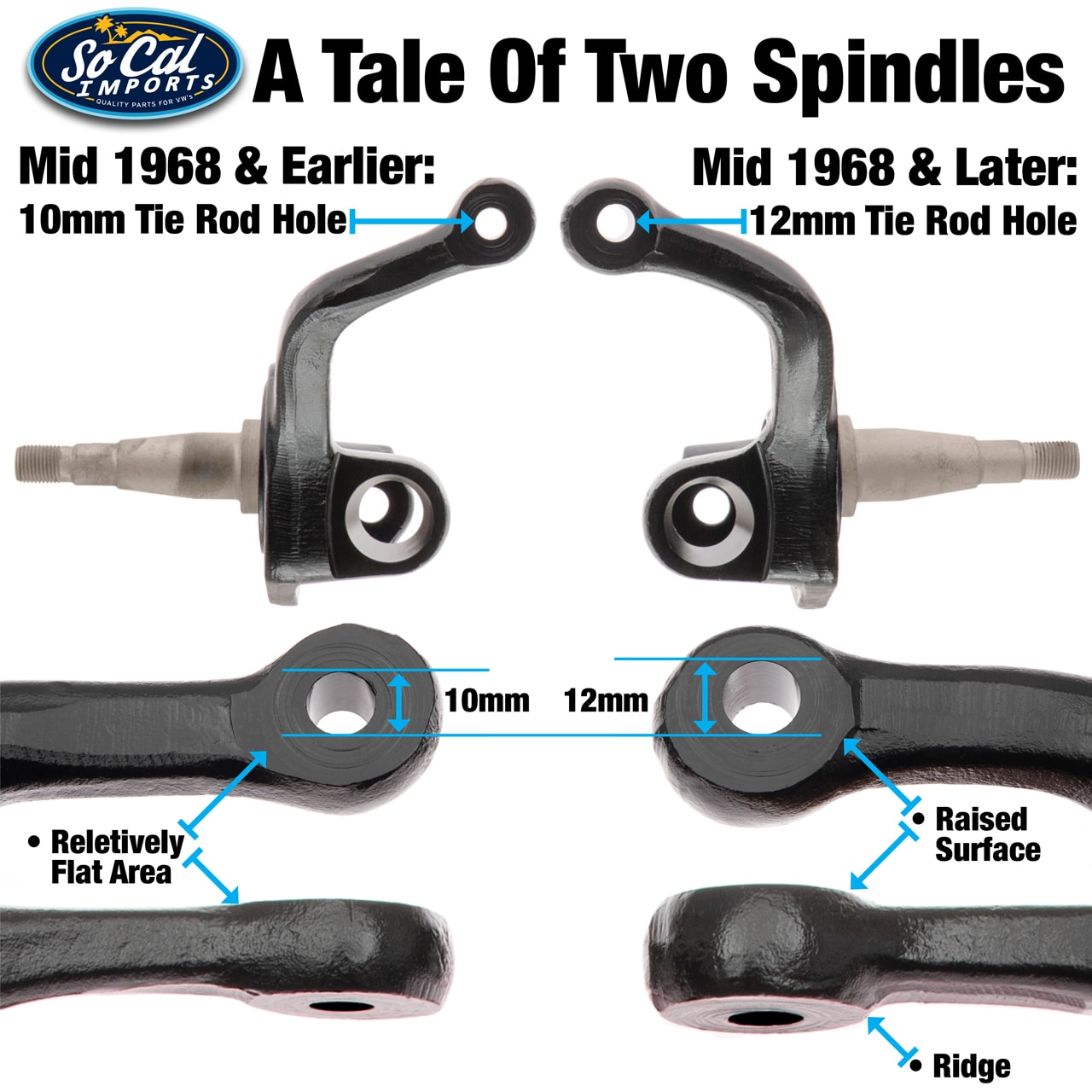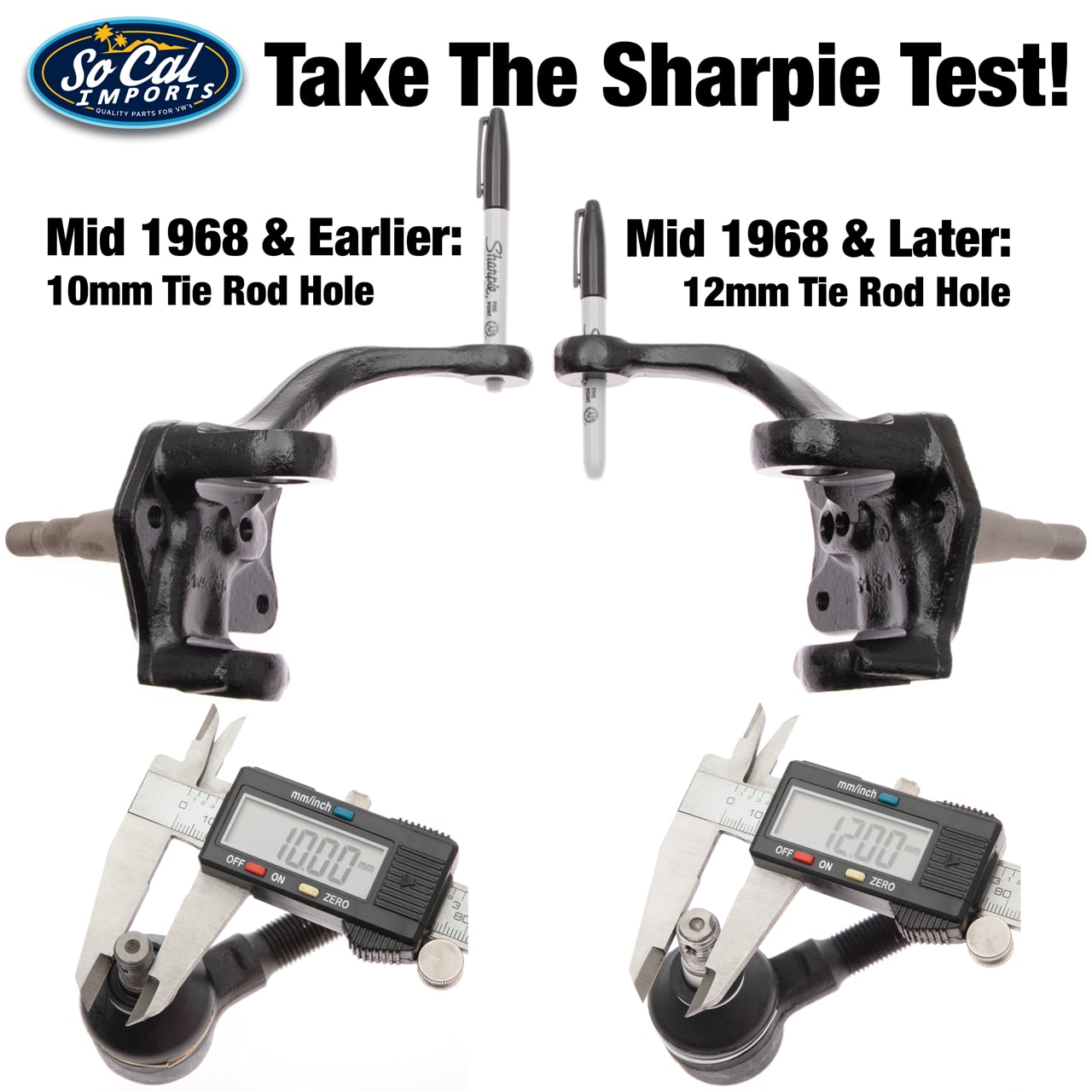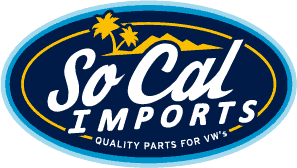Tie Rod Ends: What You Need To Know To Keep Your Classic VW On Rails!
 If you have ever spoken to Andy at length about classic VWs you have heard him say; “The great thing about a VW is most of the parts are interchangeable. The bad thing about a VW is, well, most the parts are interchangeable!” If you have experience working on classic VWs chances are good that you may have run into this scenario. The fact is that it is all too common of an occurrence, that at some point in a vintage VW’s history a repair and/or modification was performed using parts that were not OE stock replacements from the same model year.
If you have ever spoken to Andy at length about classic VWs you have heard him say; “The great thing about a VW is most of the parts are interchangeable. The bad thing about a VW is, well, most the parts are interchangeable!” If you have experience working on classic VWs chances are good that you may have run into this scenario. The fact is that it is all too common of an occurrence, that at some point in a vintage VW’s history a repair and/or modification was performed using parts that were not OE stock replacements from the same model year.
Repairs like these become a big issue when someone is looking to buy replacement parts to perform a repair or maintenance for their car and are unaware of the previously changed non-OE parts. The person will order new tie rod ends for the ’66 Bug they’re working on only to find that the parts don’t fit. Frustrated and understandably so, the installer double checks his order to confirm he didn’t order the wrong part, and the invoice shows that the parts were correctly ordered. The installer then jumps to the conclusion that the mistake must have been made at the store. Assuming the wrong parts were shipped, the installer then calls his sales representative to report the issue only to find out that the correct parts were in fact delivered.
So, What’s Happening Here…?
The scenario described above is something that we’ve seen many times before at SCI. Unfortunately, our VW enthusiast was not informed that his new ‘66 Bug project was retrofitted with spindles from a late ‘68 which require late model tie rod ends. It’s an understandable mistake that anyone could make if they didn’t know what to look for, just as it would be logical to assume that your ‘66 Bug came with ‘66 Bug suspension parts.
Knowledge Is Power!
In this article we’re going to show you how to determine the difference between early model and late model ball joint spindles found on ‘66 and later Bugs & Ghias. So, when you go to order tie rod ends or tie rod assemblies you will know the correct parts to order for your application and save yourself some frustration in the process.
The Source Of The Confusion:
The ball joint front end was introduced on Bugs & Ghias with the 1966 model year. Both models used tie rod ends with a 10mm stud until the middle of 1968, when VW updated the spindle and tie rod ends to a 12mm stud.
Seems simple enough – the 1966 to mid 1968 cars have 10mm tie rod ends, while cars from mid 1968 and later have 12mm tie rod ends. Easy, right…? Sorry, but WRONG!
The complexity of the issue deepens as the later model 12mm ball joint spindles are backwards compatible. This means a VW that originally came with the OE early model 10mm spindles and tie rod ends could have easily been retrofitted with later model 12mm setup. If this isn’t frustrating enough, know that a later model ball joint car could end up with an early model 10mm setup as well!
At this point in the program you’re probably wondering why and how does this happen. The short answer would be because it can – but there are a couple logical explanations that could help us hold on to our sanity:
• Front Beam Replacement:
At sometime during the car’s life the front end beam was replaced. This could’ve been done for multiple reasons from a front end collision repair to a custom application. Whatever the original reason for transplanting the beam, due to the compatibility you could find a later model car with an earlier model beam assembly and vice-versa. This condition is not uncommon as one may think especially with custom beams that have been shortened and/or lowered. We’ve seen this kind of thing with Bajas and rails as well.
• Spindle Replacement:
Another possibility is that at some point in time the spindles needed to be replaced and the shop used parts that were on hand and would work. It could have been just a convenience to use the parts that were readily available rather than go hunt down and pay for the correct parts for the model year of the car being worked on. When you stop to consider that if the car in question was getting this work done in the years before online shopping was the norm that it is today, one can understand how using the parts already in the shop would be a quicker solution than going out and hunting good parts down in a salvage yard – just like what our elders had to do to get it done!
The Solution: How To Identify The Spindles That Are In Your VW
The good news is now that you know what the issue is we can show you how to determine whether your car has early or late model spindles, allowing you to purchase the correct parts for your ride the first time!

A Tale Of Two Spindles:
The image above shows the specific differences between the early and late model OE ball joint spindles found on the Bug & Ghia.
Take The Sharpie Test And The Truth Will Be Revealed!
The image below illustrates an easy test you can perform with the Sharpie you should have in your toolbox. The 10mm early model spindles (left) will only allow about ⅜” of the Sharpie to poke through the tie rod end hole, whereas the 12mm late model spindle will pass the Sharpie to the middle obscuring the logo on the pen. You can also use calipers to measure the threaded end of the ball joints currently on the car to determine which setup you have.

Now You Know What You’re Working With!
Hopefully you have found this article informative and helpful. Now you are empowered with the knowledge to have a deeper understanding of your classic VW and know which parts you will need when the time comes to service your front end!
If you have further questions regarding this article or any other classic VW tech, please submit them to Ask Andy!
Parts for mid-’68 and earlier, 10mm:
#113415802B Tie Rod Assembly, (Passenger Side) 10mm for vehicles from ’49 to mid-’68
#113415801 Tie Rod Assembly, (Driver Side) 10mm for vehicles from ’49 to mid-’68
#113415821 Inner Tie Rod End, (Driver Side) 10mm for vehicles up to mid-’68
#113415813D Inner Tie Rod End with Damper Hole, 10mm for vehicles up to mid-’68
#131415811 Tie Rod End, 10mm for vehicles up to mid-’68
Parts for mid-’68 and later, 12mm:
#131415802E Tie Rod Assembly, (Passenger Side) 12mm for vehicles mid-’68 and later
#131415801F Tie Rod Assembly, (Driver Side) 12mm for vehicles mid-’68 and later
#131415821A Inner Tie Rod End, (Driver Side) 12mm for vehicles from mid-’68 and later
#131415813E Inner Tie Rod End with Damper Hole, 12mm for vehicles from mid-’68 and later
#311415812C Tie Rod End, 12mm for vehicles from mid-’68 and later

